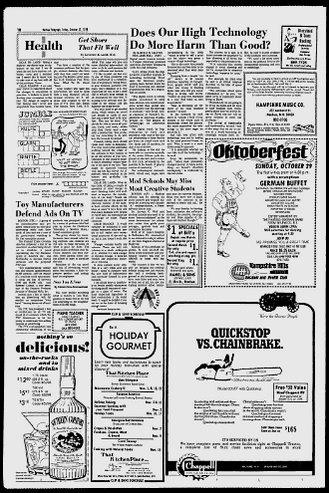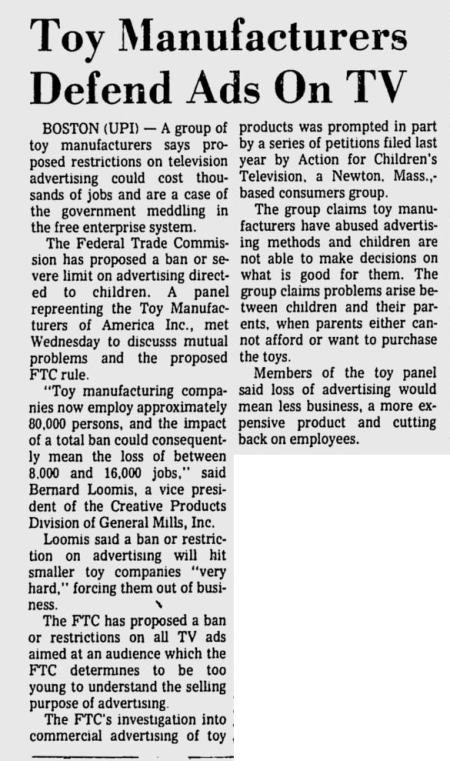Toy Manufacturers and Television Advertising in 1978
If you’ve read my book about action figure marketing in the eighties — Each Sold Separately* — then you already know how changes in the government and FCC opened the doors to toy commercials in the eighties. What you may not know, though, is that the toymakers were fighting for survival (and commercials!) back in the seventies.

From the October 27, 1978 issue of the Nashua, NH newspaper, The Telegraph, comes this short article in which we learn that toymakers notified the media that proposed changes to commercial guidelines could threaten jobs. This battle waged for years — and is still ongoing, as this recent Fast Company article shows us — and locating these snippets from the past illuminate the entire situation that makes for some incredible reading.

How did I locate this article? By searching for “Bernard Loomis,” of course! Loomis was an important part of the toy industry for decades, and as this article demonstrates he often took a role as a leader in the industry and wasn’t shy of the press:
“Toy manufacturing companies now employee approximately 80,000 persons, and the impact of a total ban could consequently mean the loss of between 8,000 and 16,000 jobs,” said Bernard Loomis, a vice president of the Creative Products Division of General Mills, Inc.
Loomis said a ban or restriction on advertising will hit smaller toy companies “very hard,” forcing them out of business.
I’d love to find more information on this situation, especially the statement that the smaller companies would be hurt worse by a ban or restriction on advertising. Really? That seems backwards to me because wouldn’t a ban on advertising on TV have helped level the playing field a bit? If Kenner and Mattel hadn’t been able to spend millions on television advertising in the seventies wouldn’t that have put them on an equal footing with the tiny companies that couldn’t afford television advertising?
Related articles
- This ‘smart’ Barbie is raising concerns over children’s privacy (theverge.com)
- Kenner’s 1992 Batman Returns “Batcave” Commercial (battlegrip.com)
- Spotted Online – Mattel’s BOOMco Toy Guns at Fast Company (battlegrip.com)